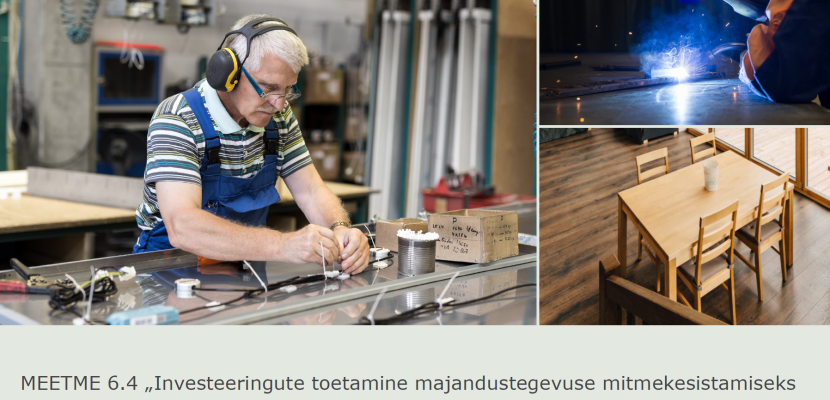
Investment grant for diversification of economic activity in rural areas

About this good practice
Over the past 30 years, there has been a steady decline in the number of jobs related to agriculture. If in 1990 50% of rural residents in Estonia were employed in agriculture, in 2000 the number was 21% and it is declining year by year.
The problem was how to create new jobs in rural areas outside the primary sector to compensate for job losses in traditional agricultural production.
Part of the problem was the seasonality of agricultural activity and, consequently, the sustainability of small farmers. The solution to the problem seemed to be the diversification of the economic activities of micro-entrepreneurial farmers in order to ensure the income also outside the traditional agricultural sector.
The second target group was companies operating in rural areas in different sectors, and which were ready to create new jobs, but which lacked sufficient financial resources to make the necessary investments.
The instrument was launched in 2015. It was an investment grant to motivate entrepreneurs to make such investments, as a result of which new jobs would be created in rural areas. Beneficiaries are micro-entrepreneurs who can apply for support for the purchase of new equipment and machinery and for the construction of premises necessary for production or service purchase. The grant rate is 40% of eligible costs.
Expert opinion
Resources needed
The measure has a budget of 70 million euros and is co-financed by the European Agricultural Fund for Rural Development (EAFRD)
Evidence of success
More than 800 micro-entrepreneurs have used the measure. In average one to three new jobs are planned to be created by one project. With the 500 projects completed to date, nearly 600 new jobs have been created in rural areas outside the agricultural sector, and there are several projects still in progress.
We can say that the economic activity in the rural area has really been diversified, as the share of jobs outside the agricultural sector in the rural area is more than 90% today.
Potential for learning or transfer
Summarizing the experience of investment support for the diversification of economic activities in rural areas, five recommendations can be made for the effective implementation of similar interventions:
Communication – it is necessary to ensure that information about the instrument and the opportunities it offers really reaches the target group.
Managing expectations – getting stakeholders and potential beneficiaries to understand the purpose of the instrument and accept the selection criteria used.
Orientation to the result – to be flexible regarding of the investments planned by the beneficiary, but strict regarding the results related to the objectives of the measure.
Substantive evaluation of projects – consider the extent to which the project contributes to the achievement of the goals of the measure, how likely it is to achieve the predicted results, how relevant the planned activities are.
Reduction of bureaucracy – orientation to results, use of simplified cost options.
